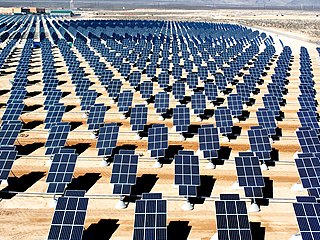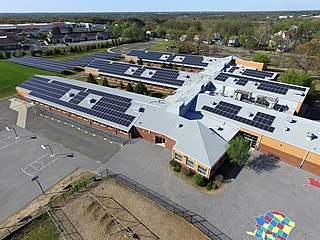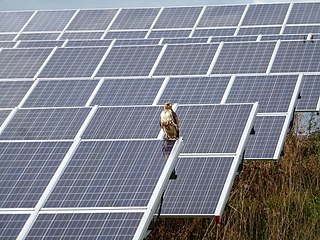
Walterboro is a city in Colleton County, South Carolina, United States. The city's population was 5,398 at the 2010 census. It is the county seat of Colleton County. Walterboro is located 48 miles (77 km) west of Charleston and is located near the ACE Basin region in the South Carolina Lowcountry.

Duke Energy Corporation is an American electric power and natural gas holding company headquartered in Charlotte, North Carolina. The company ranked as the 141st largest company in the United States in 2024 – its highest-ever placement on the Fortune 500 list.

The Virgil C. Summer Nuclear Power Station occupies a site near Jenkinsville, South Carolina, in Fairfield County, South Carolina, approximately 20 miles (32 km) northwest of Columbia.
Santee Cooper, also known officially from the 1930s as the South Carolina Public Service Authority, is South Carolina's state-owned electric and water utility that came into being during the New Deal as both a rural electrification and public works project that created two lakes and cleared large tracts of land while building hydro-electric dams and power plants. Its headquarters are located in Moncks Corner, South Carolina.

Area codes 843 and 854 are telephone area codes in the North American Numbering Plan (NANP) for a portion of the U.S. state of South Carolina that comprises roughly the eastern third and the southern tip. The numbering plan area (NPA) includes the Grand Strand, the Lowcountry, the Pee Dee, and the Sandhills. Major cities in the region are Myrtle Beach, Charleston, Beaufort, Hilton Head Island and Florence. Area code 843 was created in 1998 when area code 803 was split, while 854 was added in 2015 to form an all-services overlay.

Solar power in Nevada is growing due to a Renewable Portfolio Standard which requires 50% renewable energy by 2030. The state has abundant open land areas and some of the best solar potential in the country.

New Jersey has over 4,700 MW of installed solar power capacity as of January 2024, which provides more than 7% of the state's electricity consumption. The's state's growth of solar power is aided by a renewable portfolio standard that requires that 22.5% of New Jersey's electricity come from renewable resources by 2021 and 50% by 2030, by incentives provided for generation of solar power, and by one of the most favorable net metering standards in the country, allowing customers of any size array to use net metering, although generation may not exceed annual demand. As of 2018, New Jersey has the sixth-largest installed solar capacity of all U.S. states and the largest installed solar capacity of the Northeastern States.

A community solar project, farm or garden is a solar power installation that accepts capital from and provides output credit and tax benefits to multiple customers, including individuals, businesses, nonprofits, and other investors. Participants typically invest in or subscribe to a certain kW capacity or kWh generation of remote electrical production. The project's power output is credited to investors or subscribers in proportion to their investment, with adjustments to reflect ongoing changes in capacity, technology, costs and electricity rates. Community solar provides direct access to the renewable energy to customers who cannot install it themselves. Companies, cooperatives, governments or non-profits operate the systems.

NextEra Energy, Inc. is an American energy company with about 58 GW of generating capacity, revenues of over $18 billion in 2020, and about 14,900 employees throughout the US and Canada. It is the world's largest electric utility holding company by market capitalization, with a valuation of over $120 billion as of Nov 2023. Its subsidiaries include Florida Power & Light (FPL), NextEra Energy Resources (NEER), NextEra Energy Partners, Gulf Power Company, and NextEra Energy Services.

Solar power has been increasing rapidly in the U.S. state of North Carolina, from less than 1 MW (megawatts) in 2007 to 6,152 MW in 2019, when it had the second-largest installed PV capacity of all states.

Solar power in Michigan has been growing in recent years due to new technological improvements, falling solar prices and a variety of regulatory actions and financial incentives. The largest solar farm in Michigan is Assembly Solar, completed in 2022, which has 347 MW of capacity. Small-scale solar provided 50% of Michigan solar electricity as recently as 2020 but multiple solar farms in the 100 MW to 200 MW range are proposed to be completed by the middle of the decade. Although among the lowest U.S. states for solar irradiance, Michigan mostly lies farther south than Germany where solar power is heavily deployed. Michigan is expected to use 120 TWh per year in 2030. To reach a 100% solar electrical grid would require 2.4% of Michigan's land area to host 108 GW of installed capacity.
The Westlands Solar Park is large-scale solar power project in Kings County south of Fresno, California. It intends to build many photovoltaic power plants with a capacity totaling upwards of 2,000 megawatts (MW), larger than the world's largest photovoltaic power plants operating as of 2017. It will be constructed on brownfield land owned by the Westlands Water District that is unusable for agriculture due to excess salt pollution.

Pinopolis Dam is a dam in Berkeley County, South Carolina.
The Dolphus M. Grainger Generating Station was a coal power plant located near Conway, South Carolina in Horry County, South Carolina. The plant closed in 2012. It was owned by Central Electric Power Cooperative and operated by Santee Cooper.

Margie Bright Matthews is a Democratic member of the South Carolina Senate, representing the 45th District since 2015, when she won a special election to succeed Clementa Pinckney, who was killed in the Charleston church shooting in 2015. She is an attorney who founded a law firm.

The Nukegate scandal was a political and legal scandal that arose from the abandonment of the Virgil C. Summer nuclear expansion project in South Carolina by South Carolina Electric & Gas (SCE&G) and the South Carolina Public Service Authority in 2017. It was the largest business failure in the history of South Carolina. Before its termination, the expansion was considered the harbinger of a national nuclear renaissance. Under joint ownership, the two utilities collectively invested $9 billion into the construction of two nuclear reactors in Fairfield County, South Carolina from 2008 until 2017. The utilities were able to fund the project by shifting the risk onto their customers using a state law that allowed utilities to raise consumers' electricity rates to pay for nuclear construction.













